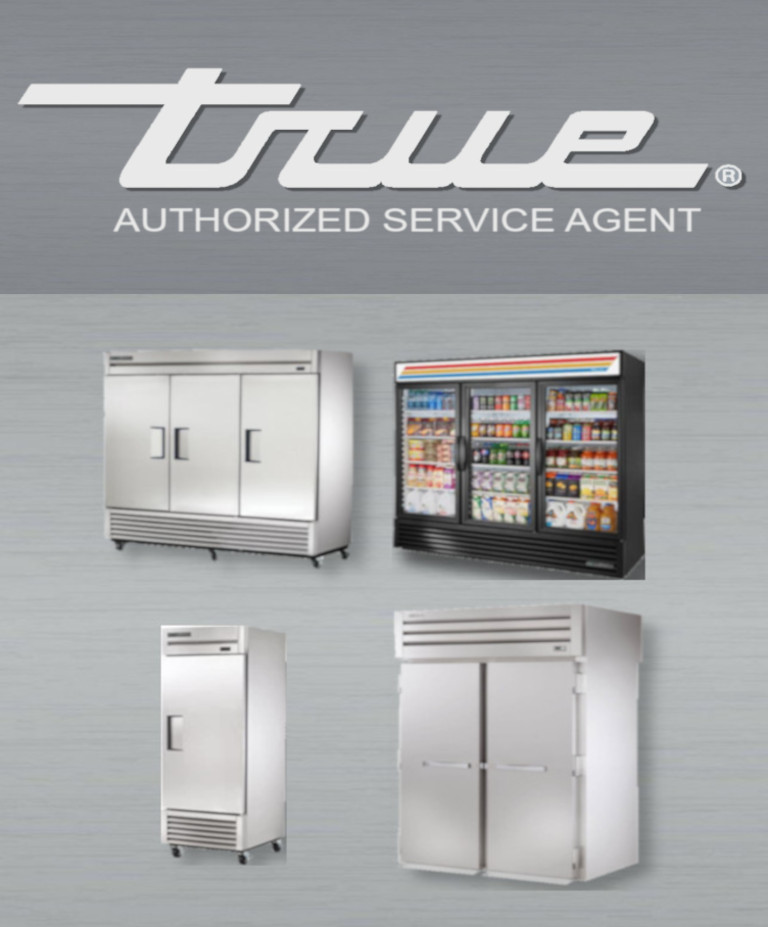Property Managers Rely On Dependable Refrigeration & Appliance Repair Service Sub-Zero Appliance Repair
Property Managers Rely On Dependable Refrigeration & Appliance Repair Service Sub-Zero Appliance Repair
Blog Article
The Ultimate Overview to Do It Yourself Home Appliance Repair Strategies
From refrigerators to dishwashers, understanding how to troubleshoot and repair these gadgets can conserve you time and cash. Are you prepared to find necessary strategies that will encourage you to handle repairs confidently?
Understanding Typical Home Appliance Issues
When you count on your home devices, it can be annoying when they all of a sudden quit functioning or act up. Comprehending common device issues can help you repair problems efficiently.
If your oven isn't home heating, defective elements or thermostat concerns could be responsible. Dishwashers usually experience issues with drainage, so see to it the filter is clean and the drainpipe pipe isn't kinked.
Also, pay attention for unusual audios; they commonly suggest mechanical issues. By identifying these indicators, you can save time and possibly prevent pricey repair services. A little knowledge goes a lengthy way in keeping your appliances, so remain informed to maintain everything running smoothly.
Crucial Tools for Do It Yourself Repair Works
Prior to diving right into DIY device repair work, it is essential to collect the right devices to ensure the process goes efficiently. Begin with a good collection of screwdrivers, including both flathead and Phillips, as they're crucial for opening up most home appliances. You'll also desire a pair of pliers for clutching and turning wires or little parts.
Do not forget a multimeter; it aids you test electric elements and diagnose problems effectively. A socket collection comes in handy for loosening up or tightening screws, while an energy knife can be valuable for opening or reducing wires packaging.
Lastly, think about having a flashlight accessible to illuminate dark rooms inside your appliances. With these vital tools, you'll be well-appointed to deal with different repairs, saving both money and time. So, gather your gear and get ready to roll up your sleeves!
Safety And Security First: Precautions to Take
Before you start any type of home appliance fixing, it's vital to prioritize safety. Make certain you wear personal protective devices, detach the source of power, and keep your workplace organized. These easy safety measures can help prevent accidents and guarantee a smoother repair service process.

Individual Protective Tools
Safety and security equipment is an important part of any DIY appliance fixing project. You need to always put on safety goggles to shield your eyes from dirt and debris. A strong set of gloves will protect your hands from sharp sides and unsafe materials. Think about using a mask if you're handling chemicals or dirt, guaranteeing you breathe securely while working. Steel-toed boots are additionally a smart option, specifically when raising hefty devices. Do not forget to put on lengthy sleeves and pants to safeguard your skin from prospective injuries. By focusing on individual safety equipment, you'll considerably minimize the risk of mishaps and injuries. Keep in mind, being prepared with the ideal equipment keeps you risk-free and focused on finishing your repair successfully.
Power Source Interference
To assure a safe DIY device repair work, detaching the power resource is important. This easy action protects against electric shocks and assurances that you can concentrate on the fixing without worrying regarding unintended activation. Once you're positive that the power is separated, you can confidently proceed with your repairs, understanding you have actually taken the essential precautions to secure on your own.
Work Area Organization
An efficient work location can make all the difference in your DIY appliance fixing job. Start by removing your work area of mess to avoid accidents and disturbances. A clean area not only enhances effectiveness yet likewise maintains you risk-free while you function on your home appliance repair.
Step-by-Step Guide for Fridge Repair Works
When your refrigerator starts breaking down, it can be aggravating, yet dealing with the trouble yourself can save you money and time. Disconnect the refrigerator to assure safety. Examine for usual issues like temperature variations or unusual noises. If it's not cooling, evaluate the thermostat setups; they could be established too expensive. Next off, tidy the condenser coils, which typically gather dust and particles. For a loud refrigerator, check the follower and confirm it's not obstructed.
If there's water pooling within, examine the door seals for damage or dust, and clean them if needed. For ice build-up, clear the defrost drainpipe. As soon as you have actually addressed the issue, connect the refrigerator back in and check it for a few hours. If the trouble continues, you may need to change a faulty component, like the compressor or follower motor. Remember, do not think twice to get in touch with the guidebook or seek professional help if required.
Taking Care Of Washing Machine Issues
Just like refrigerators, washing machines can present their own set of challenges, but numerous issues can be fixed with a bit of troubleshooting. If your device won't start, check the power cord and verify it's plugged in.
If your clothes aren't getting clean, think about the water level and detergent type; making use of excessive cleaning agent can create excess suds, impacting efficiency. For leakages, analyze the hose pipes for fractures or loose connections. Tightening these can typically fix the issue. Regular upkeep, like cleansing the filter, can protect against lots of problems from occurring. Remember, a little troubleshooting goes a lengthy means in maintaining your washing machine running smoothly.
Repairing Ovens and Stoves
Exactly how can you troubleshoot usual problems with your stove or cooktop? Begin by inspecting the power supply. Ensure it's plugged in and the breaker is not stumbled. If it's a gas oven, verify the gas valve is open. Next off, examination the heaters: if they do not fire up, cleanse the igniter and look for clogs in the heater ports.
If your stove isn't home heating, inspect the temperature level setups and confirm the door seals snugly. If it's damaged., a malfunctioning heating element might likewise be the wrongdoer; you could require to change it.
For irregular cooking, revolve your frying pans and think about utilizing an oven thermometer to confirm precise temperature levels. If you hear unusual noises or scent gas, transform off the device instantly and get in touch with an expert. By adhering to these actions, you can recognize and settle several common stove Get More Info and stove concerns effectively.
Fixing Dishwashers Facilitated
When your dishwasher begins acting up, it can be frustrating, however resolving common issues isn't as hard as it appears. You'll learn step-by-step troubleshooting techniques that will aid you pinpoint the problem, together with the crucial tools you'll need to deal with repair services yourself. Let's make fixing your dishwashing machine a breeze!
Common Dishwashing Machine Concerns
While dish washers are designed to make your life easier, they can in some cases encounter usual problems that leave you really feeling frustrated. One constant problem is inadequate cleaning efficiency; this commonly occurs because of stopped up spray arms or filthy filters. You could also discover water merging at the base, which can show a damaged drainpipe or a kinked tube. It might be a basic problem with the lock device or door seal if your dish washer's door will not latch. Additionally, strange sounds can signify loose components or worn-out components. Lastly, if you scent something weird, it could be time to inspect for food particles or a malfunctioning motor. Attending to these issues early can conserve you time and hassle in the future (Dependable Refrigeration & Appliance Repair Service).

Step-by-Step Troubleshooting
Prior to diving right into repairs, it's important to determine the certain concern your dish washer is encountering. If it's not cleaning effectively, Start by checking. Inspect the spray arms for clogs and assurance they spin freely. If it's dripping, examine door seals and pipes for any kind of damage. For odd noises, listen closely throughout cycles; international objects could be embeded the filter or impeller. Inspect the power supply and door lock if your dish washer won't begin. Don't forget to consult your individual manual for repairing tips certain to your design. By carefully resolving each possible problem, check this site out you can identify the issue and take the needed actions to fix it, making your dish washer function fresh once again.
Crucial Repair Service Tools
When repairing your dish washer,Having the right tools at your disposal can make all the distinction. Start with a screwdriver set, as you'll typically need both Phillips and flathead alternatives. A multimeter's important for identifying electrical problems, while pliers can help you grip and manipulate various parts. Do not forget a bucket or towels for any kind of water spills during repair work.
You could likewise want a level to ensure your dishwasher's properly lined up. With these essential devices, you'll be fully equipped to take on any dishwashing machine repair service obstacle that comes your way.
Regularly Asked Questions
If an Appliance Is Worth Fixing?, exactly how Do I Determine.
To determine if an appliance's worth fixing, consider its age, repair service costs, and present worth. If repair services surpass half the replacement price, you may wish to spend in a brand-new design instead.
Can I Locate Replacement Components In Your Area for My Home Appliance?
Yes, you can usually discover substitute parts in your area for your appliance. Inspect equipment shops, appliance service center, or local classifieds. Don't neglect to bring the design number to assure you kenmore washer repair service near me get the correct part!
What Typical Mistakes Should I Avoid When Repairing Appliances?
When fixing home appliances, avoid rushing through diagnostics, neglecting safety and security precautions, or using wrong devices. Do not miss reviewing guidebooks or viewing tutorials; they offer crucial guidance. Hold your horses and complete to ensure effective repair work and avoid further damages.
For how long Does a Common Do It Yourself Appliance Fixing Take?
A common do it yourself device repair usually takes one to three hours, relying on the intricacy. You'll desire to gather your devices and materials initially, and comply with guidelines very carefully to stay clear of unnecessary delays.
Are There Any Service Warranties for Do It Yourself Appliance Fixes?
When you tackle DIY appliance repairs, warranties commonly don't cover your work. However, some suppliers might honor guarantees for components you replace. Constantly inspect your home appliance's guarantee terms before beginning any type of repair services to prevent concerns.
Before diving right into DIY home appliance repair services, it's important to gather the right devices to guarantee the process goes efficiently.Prior to you begin any type of device repair, it's important to prioritize safety.To assure a risk-free Do it yourself device repair, disconnecting the power source is necessary.An efficient job location can make all the difference in your Do it yourself appliance repair service task. Constantly inspect your appliance's service warranty terms prior to starting any repair services to avoid issues.
Report this page